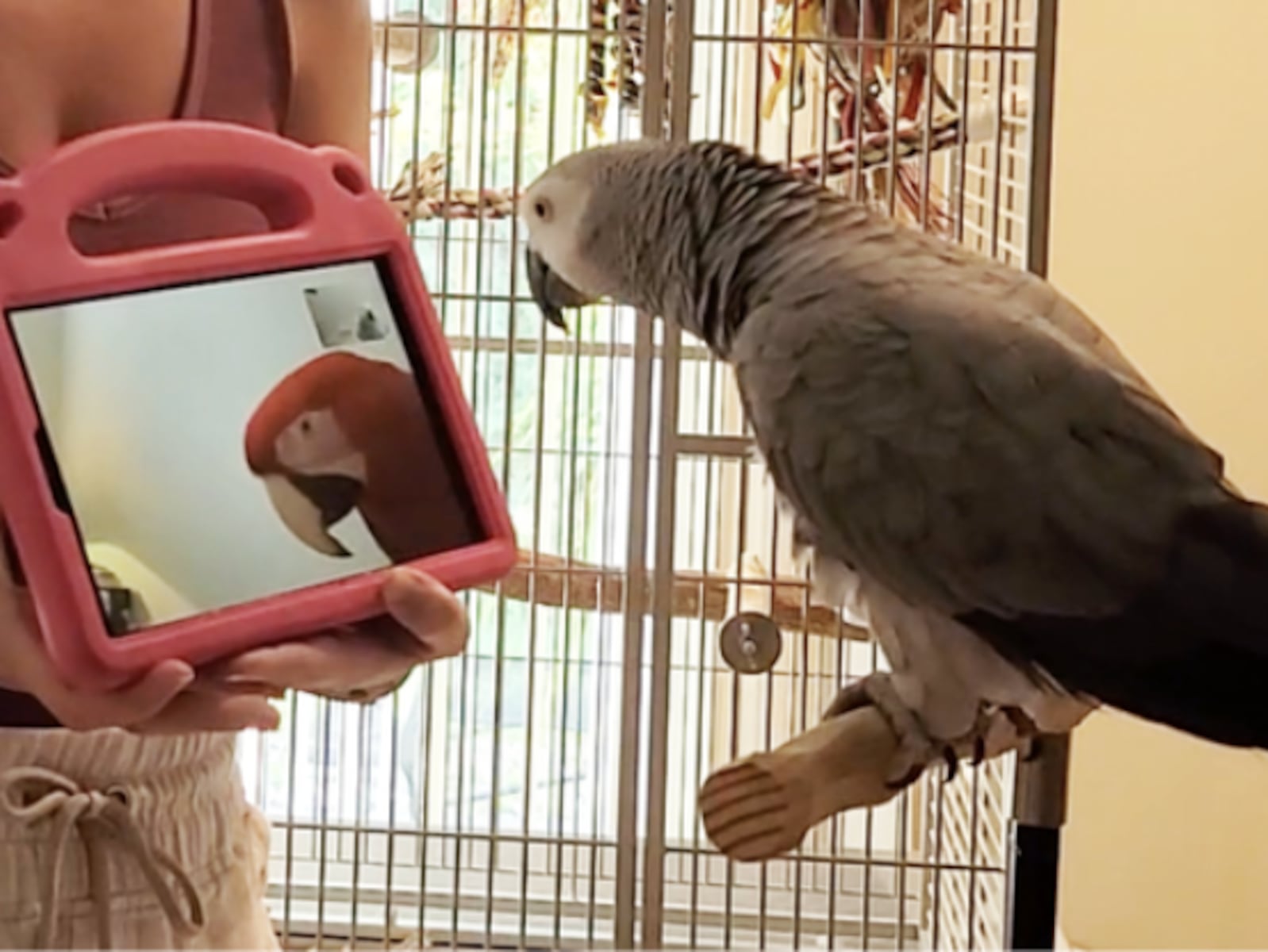Science
Scientist Develops Interactive Technology for Animal Enrichment

A groundbreaking initiative in animal welfare is gaining attention as researcher Rébecca Kleinberger develops technology that empowers animals rather than forcing them to adapt to human environments. This approach began in 2019 at the San Diego Zoo, where a hyacinth macaw named Sampson discovered a device that allowed him to control music, ultimately enhancing his interactions with visitors.
The device, called the Joy Branch, was crafted to enable Sampson to play music by using his natural behaviors. Kleinberger, who was then a researcher at the Massachusetts Institute of Technology, was approached by Sampson’s caretaker to create an engaging tool. “It’s really his own agency and its own intrinsic behavior that led to him using his branch a lot,” Kleinberger explained. This innovation not only enriched Sampson’s life but also drew more visitors to his exhibit.
As an assistant professor at Northeastern University, Kleinberger now leads the Interspecies Technology for Enrichment and Research on Animal Connection and Togetherness (INTERACT) Animal Lab. Her lab focuses on improving animal welfare by developing technologies that facilitate engagement across various species, including pets, zoo animals, and livestock.
Research and Education Initiatives
In spring 2023, Kleinberger taught a course on designing technology for animals, collaborating with students from both Northeastern and Harvard University. Some students continued their work during the summer at Zoo New England, which includes the Franklin Park Zoo and Stone Zoo. Kleinberger is also involved in a project with Tandem Vet Care aimed at reducing stress in cats during veterinary visits, with findings expected to be published shortly.
Kleinberger’s lab has gained recognition for its innovative and playful projects. A recent study in collaboration with the University of Glasgow assessed how 20 pet parrots interacted with touchscreen games. This research, part of a paper due for publication in 2024, aims to tailor games to enhance animal enrichment.
The lab previously explored a parrot-to-parrot video calling system, where 18 pet birds were observed over three months. The system facilitated 147 calls, with birds able to choose specific friends to contact. Caretakers noted behavioral improvements, such as enhanced flying and foraging abilities.
A Unique Approach to Animal Technology
While many laboratories focus on testing animal intelligence, Kleinberger’s INTERACT lab differentiates itself by concentrating on improving animals’ lives through technology. “We’re not there to test them. We’re there to try to see how we can improve their life,” she remarked, highlighting her commitment to animal welfare.
Kleinberger emphasizes the ethical considerations of using technology in animal research and ensures that her partnerships are with accredited facilities that adhere to high welfare standards. She collaborates closely with zookeepers, aiming to understand and meet the specific needs of various species.
The researcher argues that humans have a responsibility to enhance the lives of animals, especially given the impact of human activity on their natural habitats. “There is so much potential because so much of the technology is there,” Kleinberger said. She points out that much existing technology is designed for human convenience rather than animal welfare.
The Future of Animal Technology
The landscape of pet technology has expanded in recent years, featuring devices like cameras and sensors that help owners communicate with their pets remotely. Yet, Kleinberger notes that many of these innovations lack rigorous evaluation regarding their actual impact on animal behavior and well-being.
Reflecting on her work, Kleinberger contrasts her approach with past efforts to teach animals human communication methods. “I’m trying to do the inverse,” she stated, aiming to create technology that aligns with the natural behaviors and needs of animals.
As Kleinberger’s research continues to unfold, it promises to reshape the interaction between animals and technology, ultimately enhancing the quality of life for various species. The integration of innovative tools tailored to animal needs could mark a significant shift in how we think about animal welfare and technology in the years to come.
-

 Business1 week ago
Business1 week agoIconic Sand Dollar Social Club Listed for $3 Million in Folly Beach
-

 Politics1 week ago
Politics1 week agoAfghan Refugee Detained by ICE After Asylum Hearing in New York
-

 Health1 week ago
Health1 week agoPeptilogics Secures $78 Million to Combat Prosthetic Joint Infections
-

 Science1 week ago
Science1 week agoResearchers Achieve Fastest Genome Sequencing in Under Four Hours
-

 Lifestyle1 week ago
Lifestyle1 week agoJump for Good: San Clemente Pier Fundraiser Allows Legal Leaps
-

 Health1 week ago
Health1 week agoResearcher Uncovers Zika Virus Pathway to Placenta Using Nanotubes
-

 World1 week ago
World1 week agoUS Passport Ranks Drop Out of Top 10 for First Time Ever
-

 Entertainment1 week ago
Entertainment1 week agoJennifer Lopez Addresses A-Rod Split in Candid Interview
-

 World1 week ago
World1 week agoRegional Pilots’ Salaries Surge to Six Figures in 2025
-

 Science1 week ago
Science1 week agoMars Observed: Detailed Imaging Reveals Dust Avalanche Dynamics
-

 Top Stories6 days ago
Top Stories6 days agoChicago Symphony Orchestra Dazzles with Berlioz Under Mäkelä
-

 Business1 week ago
Business1 week agoMcEwen Inc. Secures Tartan Lake Gold Mine Through Acquisition









